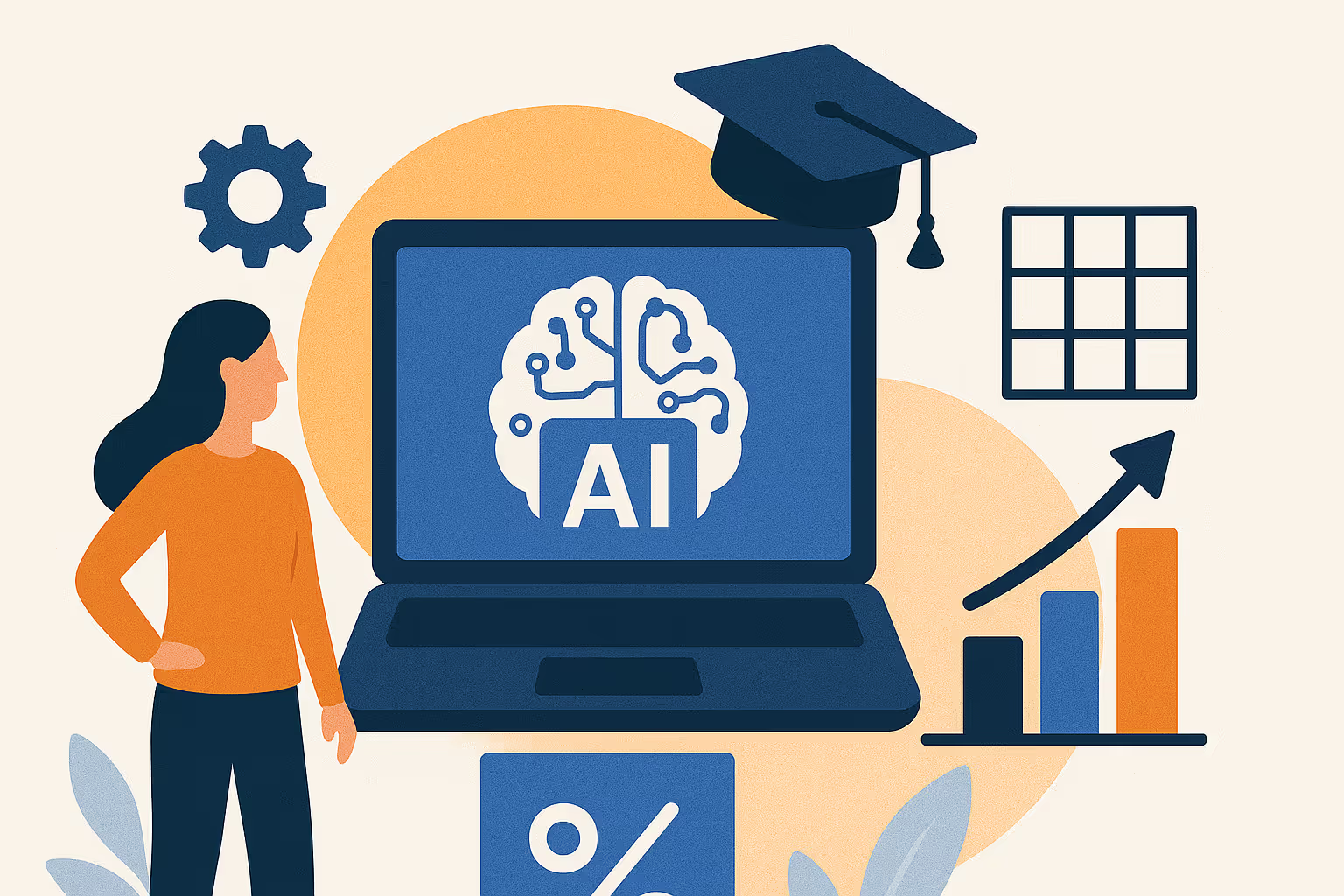About the Blog
Key Takeaways
- Digital transformation in higher education goes beyond just using technology; it involves rethinking student experiences, academic services, and operations.
- Key drivers include changing student expectations, AI advancements, and the rise of hybrid learning models.
- Successful digital transformation requires assessing readiness, building a strategic roadmap, training staff, and making data-driven decisions.
- Challenges like budget constraints and faculty resistance can be overcome with clear strategies, leadership buy-in, and scalable solutions.
The rapid evolution of technology is reshaping higher education. Universities are increasingly adopting digital tools to enhance learning, streamline administrative processes, and improve student experiences. In a highly competitive landscape, institutions that fail to innovate risk falling behind.
This blog explores the fundamentals of digital transformation in higher education, the key factors driving it, and actionable steps universities—particularly those undergoing transformation at public institutions—can take to stay ahead.
What Is Higher Education Digital Transformation?
Higher education digital transformation is the strategic integration of technology into every aspect of a university’s operations, from academics and student services to administrative processes. It’s not just about adopting new software—it’s about rethinking how institutions deliver value to students.
Common Misconceptions About Digital Transformation
- It’s just about implementing new technology → True transformation requires cultural and operational change.
- It only affects online learning → It impacts the entire student lifecycle, from admissions to alumni engagement.
- It’s a one-time process → Transformation is ongoing, requiring institutions to adapt continuously.
From AI-driven advising to blockchain-powered credentials, digital transformation is reshaping everything from classroom experiences to enrollment strategies.
Key Drivers of Digital Transformation in Higher Education
Several factors are pushing universities to embrace digital change:
1. Changing Student Expectations
Today’s students expect seamless, tech-enabled experiences. They want personalized learning, 24/7 access to support, and flexible study options—forcing institutions to adapt.
2. Technological Advancements
From AI-powered chatbots to virtual reality classrooms, emerging technologies are transforming how students learn and interact with institutions.
3. Growth of Online and Hybrid Learning
The rise of online education and hybrid models has increased competition. Universities must enhance their digital offerings to attract and retain students.
4. The Need for Data-Driven Decision-Making
Universities are leveraging analytics to track student engagement, predict retention risks, and improve learning outcomes—making data a key driver of transformation.
Key Higher Education Digital Transformation Steps
1. Assess Readiness and Define Objectives
Before investing in new technologies, universities must assess their current digital maturity. This includes evaluating:
- Existing IT infrastructure – Are current systems outdated or interoperable?
- Academic services – Is student support accessible and personalized?
- Institutional goals – Is the focus on improving retention, streamlining operations, or enhancing engagement?
Collaboration across faculty, IT teams, and leadership is crucial to set realistic objectives and ensure alignment with institutional priorities.
2. Build a Digital Strategy and Infrastructure
A solid digital transformation strategy includes:
- Defining a clear vision – What does success look like?
- Investing in scalable technology – Cloud-based platforms, secure data systems, and AI-driven tools.
- Ensuring data security and governance – Policies must be in place to protect student information and ensure compliance.
Universities should regularly ask: Are our systems interoperable? How can we make digital tools accessible to all students?
3. Implement Key Digital Technologies
Adopting the right technologies is crucial for a successful transformation. Key innovations include:
- AI & Machine Learning – Automates grading, personalizes learning experiences, and predicts student success.
- Cloud Computing – Enables seamless access to digital resources and remote collaboration.
- Blockchain – Secures credentials and prevents diploma fraud.
- AR/VR & Metaverse – Enhances immersive learning experiences.
- Automation & Chatbots – Provides instant support for students navigating admissions and enrollment.
4. Train Faculty and Staff
Technology adoption fails without proper training. Institutions should:
- Offer workshops and certifications on using digital tools.
- Provide ongoing support to help faculty integrate technology into their teaching.
- Foster a culture of digital innovation to encourage continuous learning.
5. Make Data-Driven Decisions
Universities must harness data to:
- Identify at-risk students and intervene early.
- Optimize course offerings based on demand and performance trends.
- Enhance student engagement by analyzing behavioral patterns.
AI-powered analytics can help institutions predict enrollment trends, personalize learning experiences, and allocate resources effectively.
6. Ensure Scalability and Future-Proofing
Digital transformation is not a one-time project—it’s an ongoing evolution. Universities should:
- Invest in scalable solutions that grow with institutional needs.
- Stay updated on emerging technologies like quantum computing, 5G, and advanced AI.
- Continuously adapt to new learning models and student needs.
Challenges and Solutions in Digital Transformation
Despite the benefits, universities face several challenges:
1. Budget Constraints
Solution: Focus on cost-effective cloud solutions and phased technology rollouts.
2. Faculty Resistance
Solution: Provide hands-on training and emphasize how technology enhances teaching.
3. Data Security Concerns
Solution: Implement strict cybersecurity protocols and ensure compliance with data protection regulations.
4. Digital Divide Among Students
Solution: Offer financial aid for devices, provide free Wi-Fi access, and create digital literacy programs.
Universities Leading Digital Transformation
Several institutions are setting the benchmark for digital innovation. The future of edtech with Element451 highlights how AI-driven solutions are revolutionizing enrollment management and student engagement, offering a glimpse into what’s next for digital transformation at public institutions and private universities alike.
- Arizona State University – Uses AI-powered chatbots to enhance student support and boost retention.
- Southern New Hampshire University – Pioneered flexible online learning models and personalized education pathways.
- Purdue University – Implements blockchain-based transcripts for secure credential verification.
- The University of Central Florida – Blends virtual reality into online courses for immersive learning.
These institutions demonstrate how strategic digital initiatives can improve student outcomes and operational efficiency.
Conclusion
Higher education digital transformation is no longer optional—it’s essential for universities to stay competitive, improve student experiences, and drive institutional growth. By assessing readiness, implementing the right technologies, and fostering a data-driven culture, institutions can future-proof their operations and thrive in an increasingly digital era.
Frequently Asked Questions
What are the 4 main areas of digital transformation?
The four main areas include student experience, academic services, administrative efficiency, and data-driven decision-making.
What is digital technology in higher education?
Digital technology in higher education includes AI, cloud computing, learning management systems, virtual classrooms, and student data analytics.
What are examples of digital technology in higher education?
Examples include online learning platforms, AI chatbots, blockchain credentials, AR/VR classrooms, and predictive analytics for student success.










